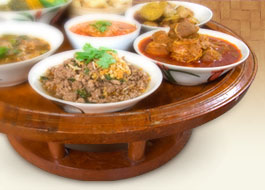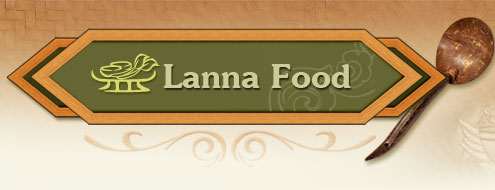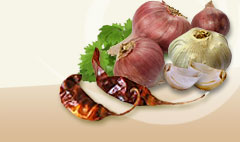palmyra palm |
|
|
 | Borassus Flabellifer Linn |
|
| |
 | Palmae |
|
| |
 | Palmyra palm, lonar palm |
|
| |
 | Tan ta not, tan yai, tan na, tan nao (Khmer), not (South). (Kanchana Diwiset, et al., 2005, p. 69) |
|
| |
 | Gigantic tree, 30 m. high, round trunk, slender upward, unbranched; bark tough splinter. Leaves fan-shaped, terminal, coriaceous, 6-8 cm. wide, sword-like, 140 cm. long, bifid, petiole spiny, blade. Inflorescence bifurcate, large with dioecious flowers; male inflorescence of long cylindrical branches, green and brown when mature; female flowers called chan yielding sugar. Drupe subglobose, black with yellow tips when mature, fragrant. (Kanchana Diwiset, et al., 2005, p. 69) |
|
| |
 |

Food: The young flowers called pli tan are made into kaeng pli tan, a favorite Lanna dish. Ripe fruit with yellow flesh can be made into a puffy pudding called khanom tan. |

Roots boiled to drink to quench thirst, relieve fever, tonsil infection, boost energy and expel worms.
Leaves calm the nerves or anxieties after child birth. They can be roasted and made into a powder for smoking to reduce blood pressure.
Flower stems can be boiled to drink to expel worms and used as a refreshing drink.
Sheaths or fresh leaf stems can be roasted and extracted to drink to stop diarrhea and relieve mouth sores. (Kanchana Diwiset, et al., 2005, p. 69)
|
|
| |
 | All year round |
|
| |
 |
Kanchana Diwiset et al., comp. (2005). Phak Phuen Ban Phak Nuea. Kanchana Diwiset, ed. Nonthaburi: Project of Text Development, Institute of Traditional Thai Medicine . |
|
| |
|
|




